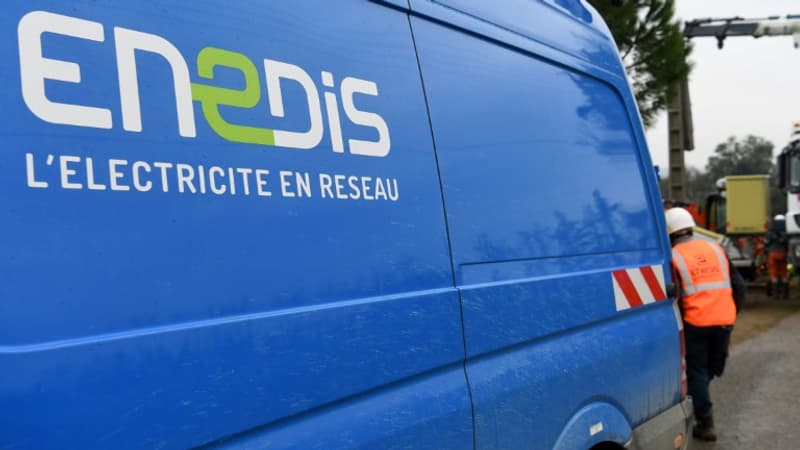Enedis will be at the center of EDF’s restructuring. The new CEO, Luc Rémont, has just taken office and the unions are already stepping up. The CFGT, the CFDT, FO and the CFE-CGC published a joint communiqué yesterday in which they promise to be “vigilant”. They fear the return of Hercules, the government project that sought to separate EDF into two entities.
His concern is justified when all the investment banks are working on new EDF reorganization schemes. They will be presented in the coming months to Luc Rémont who, after having worked for Bank of America Merrill Lynch for seven years, will analyze them carefully. A single slogan: preserve Enedis. The distribution subsidiary was at the center of a ten-day strike in 2021 when the government was negotiating with Brussels to restructure EDF. Employee mobilization rates reached almost 50%!
The first solution would consist of a status quo of Enedis directly maintained 100% by EDF. An important difference with the Hercules project that housed it with renewable energy activities. This set, called “EDF Vert”, was intended to go public to boost Enedis’ generous margins, valued at 5,000 million euros.
A TEN-Enedis wedding
Except that this option would prevent EDF from using Enedis to bail out. Because the first issue is this: EDF will need money again. The group has already lost 5,300 million euros in the first half due to the historic decline in its nuclear production. And after the capital increase of 3,000 million euros last April, another risk of being necessary next year.
This is the other stumbling block for Luc Rémont: not letting EDF sink below 60,000 million euros of debt.
Suddenly, there is a hybrid solution that keeps Enedis in the 100% public fold and allows EDF to recover funds. It could go through a rapprochement with the manager of the electricity transmission network (RTE). According to various sources, this is an option favored by RTE boss Xavier Piechaczyk. It would make it possible to create a set of “electrical networks in France”, from production to distribution. A politically attractive argument.
RTE could, in particular, rely on its shareholder Caisse des Dépôts to obtain financing. But at the industrial level, such an alliance does not seem to make sense. “RTE and Enedis do not do the same job at all and are not regulated in the same way,” explains a person familiar with the two companies. The regulator does not welcome such a scheme.
Caisse des Dépôts still to the rescue?
Finally, EDF could directly open the capital of Enedis to public investors as it had done with RTE in 2017, incorporating Caisse des Dépôts and CNP Assurances as 49.9% shareholders.
“All these options exist on paper, explains a close friend of EDF and the State. But Luc Rémont will first have to define an industrial project.” The general director of EDF will have to do with the means at hand. The group has already started a sale plan of 3,000 million euros. And other subsidiary sales should take place next year in view of the company’s losses. Edison’s Italian branch, which is worth around 5 billion euros, is regularly cited. “Jean-Bernard Levy did not want to sell it, underlines a good EDF connoisseur. But it is no longer there…”.
The market is also buzzing with the possible sale of Dalkia, which specializes in energy saving. Valued at about 4,000 million euros. But in EDF, many think that in a moment of energy sobriety, Dalkia would have its place next to renewable energies to list the group on the stock market. Questioned two weeks ago on the subject, Bercy had stated that a partial sale of renewable energy activities “was not on the table.” Without denying in absolute terms what already existed in the Hercules project. With a debt of 60,000 million euros, losses in 2022 and nuclear production still very low in 2023, Luc Rémont will have no choice of weapons.
Source: BFM TV


